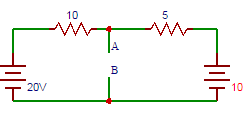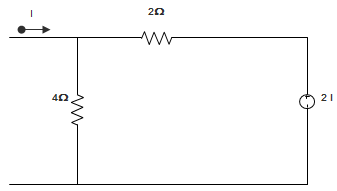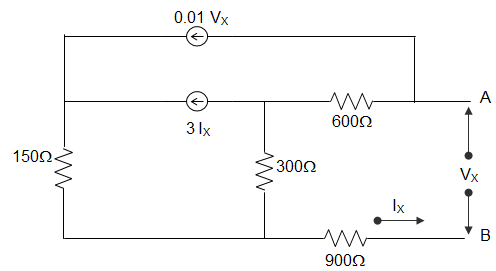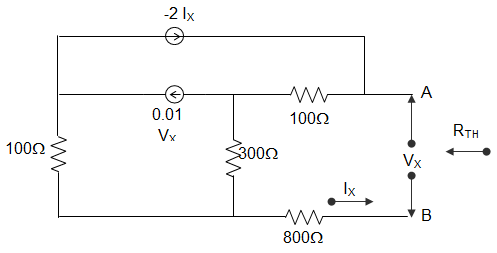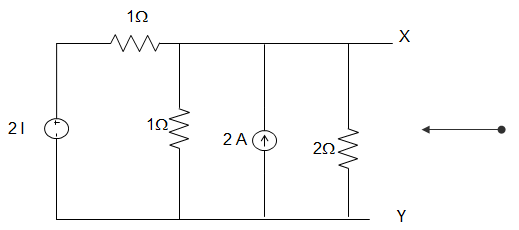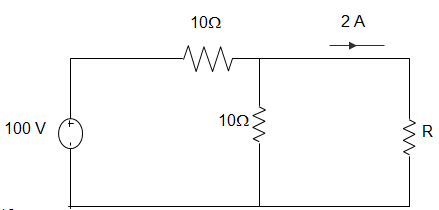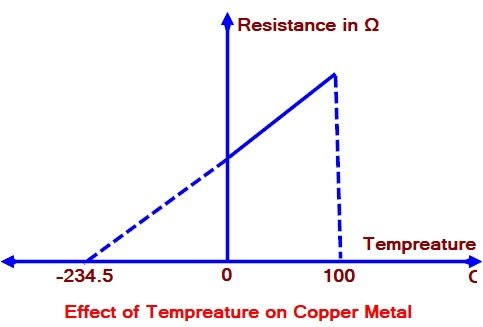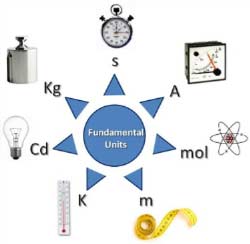121. Find the current flowing between terminals A and B in the following circuit.
A. 1
Show Explanation Answer: D
Short-circuiting terminals A and B,
20 − 10(I1) = 0
I1 = 2A. 10 − 5(I2)
I2 = 2A.
Current flowing through terminals A and B = 2 + 2 = 4A.
122. Find the equivalent resistance between terminals A and B in the following circuit.
A. 3
Show Explanation Answer: C
The resistance at terminals AB is the parallel combination of the 10Ω resistor and the 5Ω resistor
= > R = (10×5)/(10 + 5) = 3.33Ω.
123. Find the current flowing between terminals A and B obtained in the equivalent Norton’s circuit.
A. 8
Show Explanation Answer: D
To solve for Norton’s current we have to find the current passing through the terminals A and B. Short-circuiting the terminals a and b,
I = 100/(6×10)/(6 + 10) + (15×8)/(15 + 8)) = 11.16 ≅ 11A.
124. Find the equivalent resistance between terminals A and B obtained in the equivalent Norton’s circuit.
A. 8
Show Explanation Answer: B
The resistance at terminals AB is the parallel combination of the 10Ω resistor and the 6Ω resistor and parallel combination of the 15Ω resistor and the 8Ω resistor
= > R = (10×6)/(10 + 6) + (15×8)/(15 + 8) = 8.96≅9Ω.
125. Find the current through a 5Ω resistors in the circuit shown below.
A. 7
Show Explanation Answer: A
To solve for Norton’s current we have to find the current passing through the terminals A and B. Short-circuiting the terminals a and b
I = 11.16×8.96/(5 + 8.96) = 7.16A.
126. Find the voltage drop across a 5Ω resistor in the circuit shown below.
A. 33
Show Explanation Answer: D
The voltage drop across 5Ω resistor in the circuit is the product of current and resistance
= > V = 5×7.16 = 35.8 ≅ 36V.
127. Using Norton’s Theorem calculate the equivalent load as shown in the figure
A. 4/3 Ω
Show Explanation Answer: B
Applying KCL in the given circuit, we get
\(\frac{V}{4} + \frac{V − 2I}{2}\) = I
Or
3V − 4I/4 = I
Or, 3V = 8I
∴ V/I = 8/3 Ω.
132. In the following circuit, the value of Norton’s resistance between terminals a and b are ___________
A. RN = 1800 ΩN = 270 ΩN = 90 ΩN = 90 Ω
Show Explanation Answer: D
By writing loop equations for the circuit, we get,
VS = VX , IS = IX
VS = 600(I1 – I2 ) + 300(I1 – I2 ) + 900 I1
= (600 + 300 + 900) I1 – 600I2 – 300I3
= 1800I1 – 600I2 – 300I3
I1 = IS , I2 = 0.3 VS
I3 = 3IS + 0.2VS
VS = 1800IS – 600(0.01VS ) – 300(3IS + 0.01VS )
= 1800IS – 6VS – 900IS – 3VS
10VS = 900IS
For Voltage, VS = RN IS + VOC
Here VOC = 0
So, Resistance RN = 90Ω.
133. For the circuit shown in the figure below, the value of Norton’s resistance is _________
A. 100 Ω
Show Explanation Answer: A
IX = 1 A, VX = Vtest
Vtest = 100(1 − 2IX ) + 300(1 − 2IX – 0.01VS ) + 800
Vtest = 1200 – 800IX – 3Vtest
4Vtest = 1200 – 800 = 400
Vtest = 100V
∴ RN = V/1 = 100 Ω.
134. For the circuit shown in the figure below, the Norton Resistance looking into X − Y is __________
A. 2 Ω
Show Explanation Answer: D
RN = VOC /ISC
VN = VOC
Applying KCL at node A
\(\frac{2I − V_N}{1} + 2 = I + VN /2
Or, I = VN /1
Putting, 2VN – VN + 2 = VN + VN /2
Or, VN = 4 V.
∴ RN = 4/2 = 2Ω.
135. In the figure given below, the value of Resistance R by Norton’s Theorem is ___________
A. 40
Show Explanation Answer: B
\(\frac{V_P − 100}{10} + \frac{V_P}{10}\) + 2 = 0
2VP – 100 + 20 = 0
∴ VP = 80/2 = 40V
∴ R = 20Ω (By Norton’s Theorem).
Pages:
1 2 3 4 5 6 7 8 9 10 11
